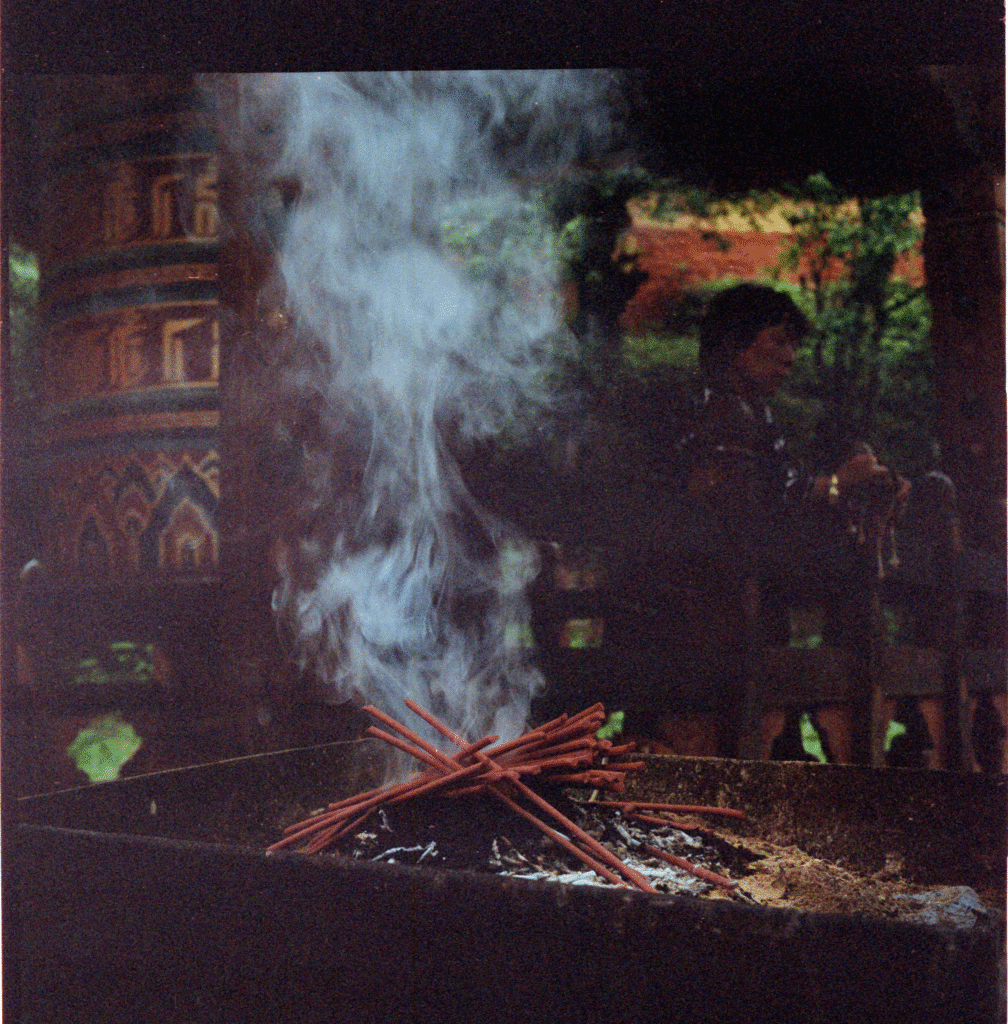
Sketching from Another Perspective
By 8:30 I was already almost late.
I had packs of incense, but needed to grab fresh fruit from Kaja Throm before picking up Yangday La and Wang Rana Gurung. When I had invited them to join a research project sharing Bhutanese perspectives on everyday objects, they suggested that to really get the Bhutanese perspective we should start off on the right foot—with a visit to Dechenphug to bless the project.
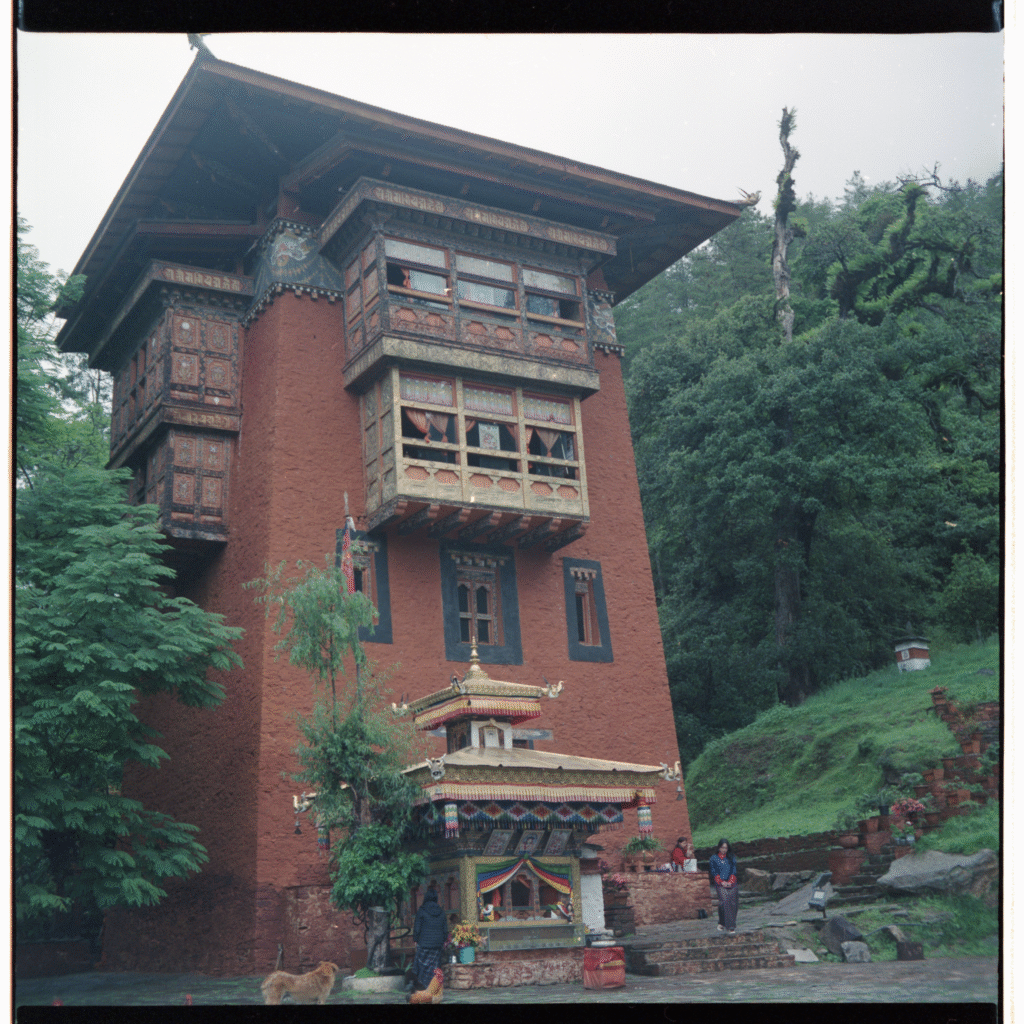
We drove up north in the Thimphu Valley, into the winding forest to the earth-colored ütse residence of Aap Gyenyen Jagpa Melen, fierce protector of Thimphu. Together the three of us walked the last leg to the temple grounds, roosters looked on from low branches, animals released from their fates. We offered one pack of incense at the gate and spun the large prayer wheel, but from there Yangday and Wang continued without me. Dechenphug, as the abode of a tempestuous and powerful protector does not permit visitors to Bhutan to enter.
This space is reserved, an intimate interior restricted to protect the relationship between Bhutanese and those who watch over them. This research starts with taking such restrictions seriously. In thinking about circulation, we asked what can circulate and spark connections, and what deserves protection and not to be subjected to the gaze of social media or the trample of guests. In drawing relationships to Bhutanese identity, we started with a sense of respect, to the people, the relationships, and how they produce their own webs of meaning. Some of which circulate, some of which don’t.
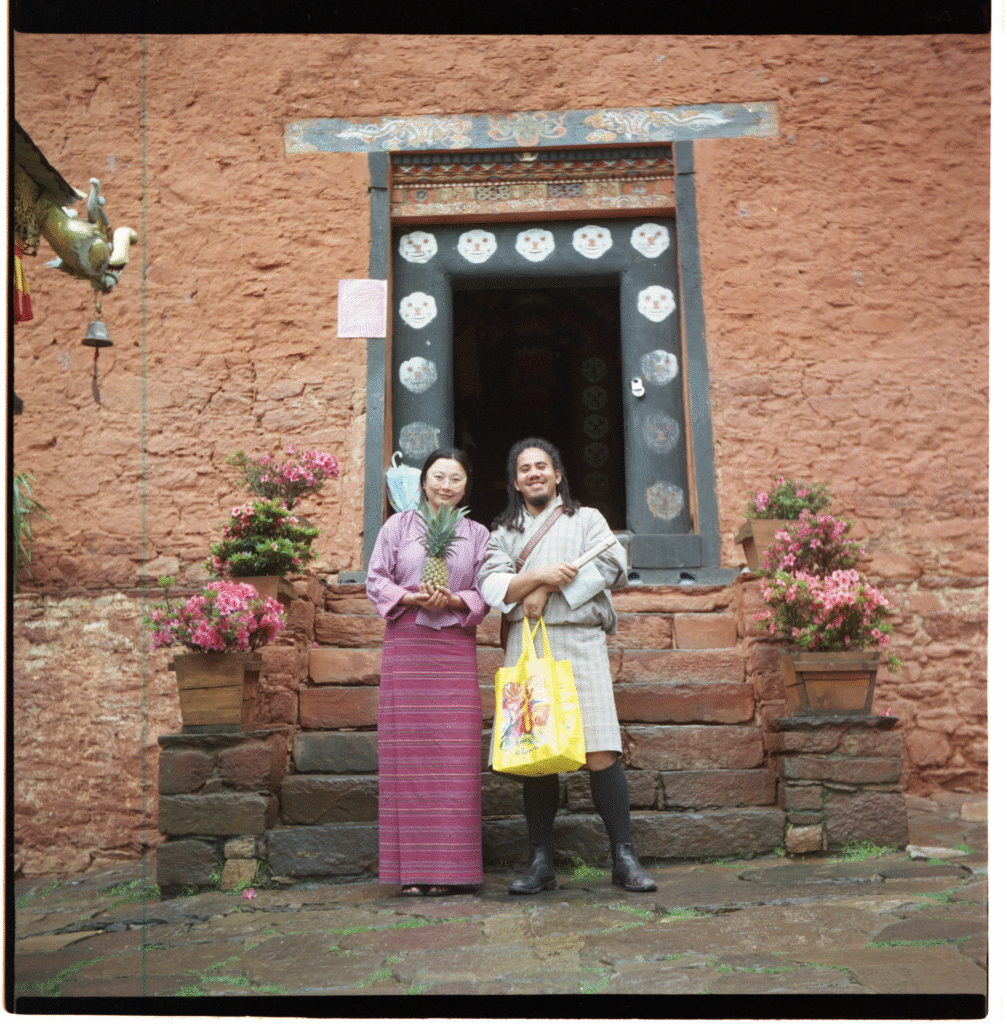
Yet, the goal of this project is circulation. How can we respect boundaries, respect diversity, but find a common thread to pull together a sense of what connects people to Bhutanese identity? In the clear morning air, we drove down the road towards something new and something old.
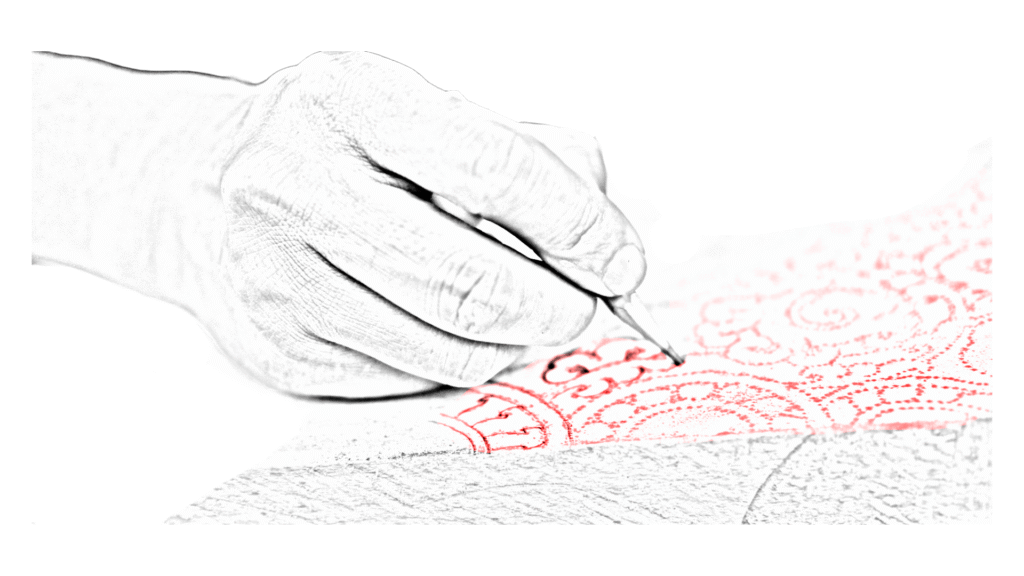
How could we draw inspiration from respecting the ways that traditional knowledge circulates in Bhutan? To have a project that shared something more than just the secret or the sacred, but the everyday ways they become part of a larger sense of Bhutanese experience.
Drawing, the art of rendering objects in relation to each other, people and their environment, provides personal perspective and experience, embodied knowledge, while also respecting boundaries of what people want to keep close. How could we use drawing as part of our research?
Inviting New Questions
Bhutan has worked to preserve traditional arts and crafts, the Zorig Chusum with support in institutions, in incorporation to government projects, and in their persistence as a part of everyday life navigating the places and practices. Yet, how younger generations find a sense of ownership over “tradition” is less often clear. This research focuses on professional producers, makers, and shakers in Thimphu to ask how they came to take up the objects we often take for granted.
Asking in a New Way
From the start, this project used collaborative research design—all co-researchers are stakeholders, and even participants can direct the focus of the conversation so that we can follow the connections we find rather than the ones we expect to see. The National Library and Archives of Bhutan is our gracious host institution, and we connect these makers’ experiences to their own documentation of these practices in the ICHlinks project—together these make two kinds of resources, lived experience and documented practice.
We recruited two up-and-coming creative voices in Thimphu, and from the beginning they were stakeholders and co-designers, using their own insight, experience, and skills to shape how the project could gather data, select participants, and connect to younger generations. They conducted visits to potential participants, we conducted five multi-lingual 1–2-hour site visits, and reviewed materials collaboratively to draw out themes. Each interview will result in a sketch and a short story that draws out the themes our participants shared were a meaningful aspect of their work and their own path to find it.
Thus, this project is not only a note passed across class to friends around Thimphu and beyond, it is a public humanities project not only designed for young Bhutanese, but with them and hoping to elevate their perspectives to the stage.
Object Based Research, People-Oriented Perspectives
So, we want to empower people to see how tradition lives or finds a new place in their own lives, but how? We selected five sites and participants to capture a small sense of the diversity of Bhutanese identities and experience; interviewing all across the valley; in different disciplines and training; different genders; in multiple languages; and tried to convey the variety of paths they chose as they navigated between tradition and change, personal and community.
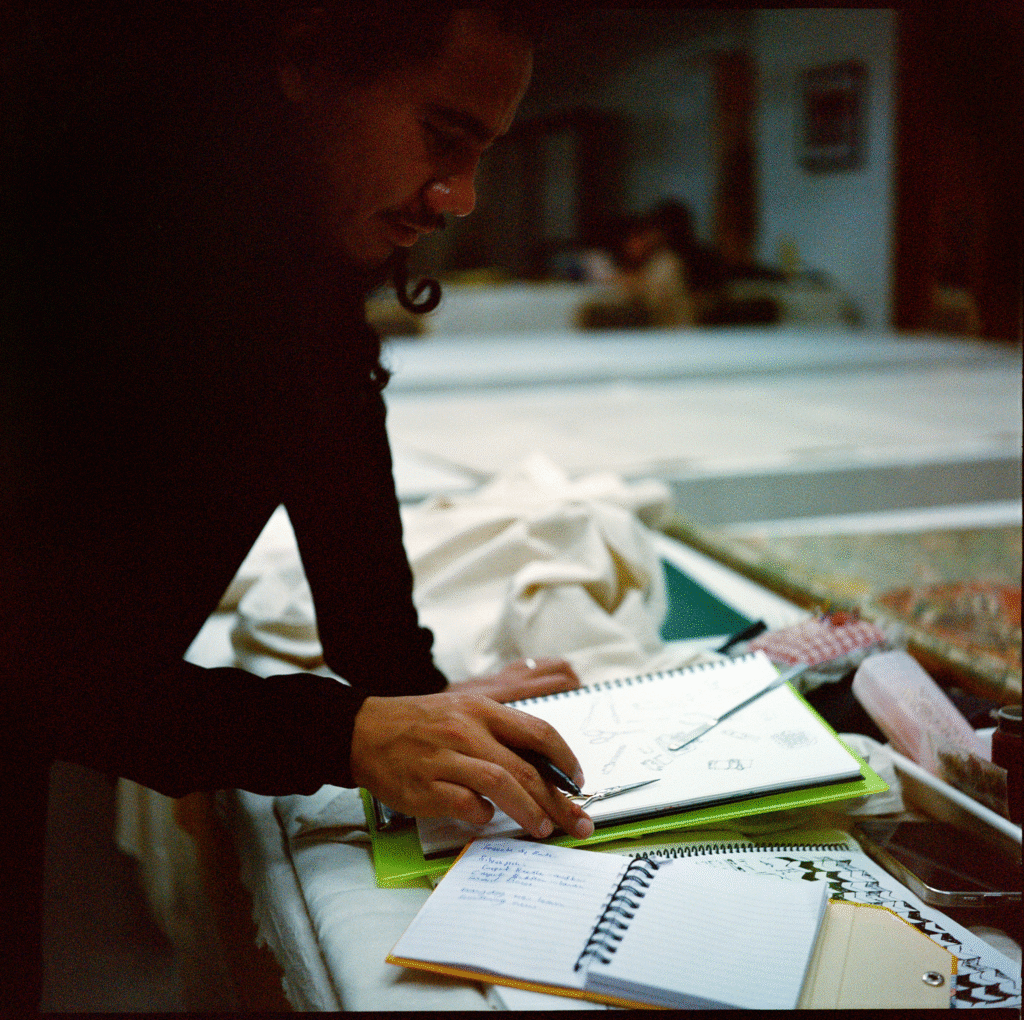
Objects such as cheese, incense, and home-goods like textiles not only provide sensory memories, they also travel—and can provide an unexpected link to home when far away. They transcend some of the diversity across Bhutan and lend an example of how to engage with those differences as meaningful and connected.
By beginning with objects, we open up a route to understand how people connect to each other through material: through shared memories, practices, and the chain of production that links communities together across the length of the country and beyond to make the product possible. Looking at the properties and qualities of objects also starts to show what makes these objects practical, or socially meaningful as we distinguish our own taste in goods. Object-based research can help start a conversation about how we produce value—both economically, and culturally.
Goals
Our goals are humble, we hope you enjoy these stories, are enthralled by the images, and find support and connection to the lives and objects.
Dr. Tierney Brown did her initial fieldwork in 2022, when the air was thick with uncertainty of what would come after the pandemic lockdowns. She proposed the Drawn from Thimphu project as a way to spark more conversations about what is shared in practice, across generations, distance, and even lineages.
For the project, she collaborated with the National Library and Archives of Bhutan, her co-researchers Wang Rana Gurung and Yangday La, and had financial support from a Humanities New York DIgital Humanities grant.
Images for this page were shot on Kodak Porta 800 on a Yashica LM Twin Lens Reflex.
Leave a Reply